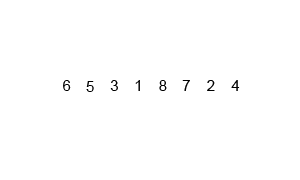当我偶然发现难以理解算法的工作原理时,我会添加调试输出来检查算法内部到底发生了什么。
这里是带有调试输出的代码。尝试理解递归调用的所有步骤mergesort以及merge输出的作用:
def merge(left, right):
result = []
i ,j = 0, 0
while i < len(left) and j < len(right):
print('left[i]: {} right[j]: {}'.format(left[i],right[j]))
if left[i] <= right[j]:
print('Appending {} to the result'.format(left[i]))
result.append(left[i])
print('result now is {}'.format(result))
i += 1
print('i now is {}'.format(i))
else:
print('Appending {} to the result'.format(right[j]))
result.append(right[j])
print('result now is {}'.format(result))
j += 1
print('j now is {}'.format(j))
print('One of the list is exhausted. Adding the rest of one of the lists.')
result += left[i:]
result += right[j:]
print('result now is {}'.format(result))
return result
def mergesort(L):
print('---')
print('mergesort on {}'.format(L))
if len(L) < 2:
print('length is 1: returning the list withouth changing')
return L
middle = len(L) / 2
print('calling mergesort on {}'.format(L[:middle]))
left = mergesort(L[:middle])
print('calling mergesort on {}'.format(L[middle:]))
right = mergesort(L[middle:])
print('Merging left: {} and right: {}'.format(left,right))
out = merge(left, right)
print('exiting mergesort on {}'.format(L))
print('#---')
return out
mergesort([6,5,4,3,2,1])
输出:
---
mergesort on [6, 5, 4, 3, 2, 1]
calling mergesort on [6, 5, 4]
---
mergesort on [6, 5, 4]
calling mergesort on [6]
---
mergesort on [6]
length is 1: returning the list withouth changing
calling mergesort on [5, 4]
---
mergesort on [5, 4]
calling mergesort on [5]
---
mergesort on [5]
length is 1: returning the list withouth changing
calling mergesort on [4]
---
mergesort on [4]
length is 1: returning the list withouth changing
Merging left: [5] and right: [4]
left[i]: 5 right[j]: 4
Appending 4 to the result
result now is [4]
j now is 1
One of the list is exhausted. Adding the rest of one of the lists.
result now is [4, 5]
exiting mergesort on [5, 4]
#---
Merging left: [6] and right: [4, 5]
left[i]: 6 right[j]: 4
Appending 4 to the result
result now is [4]
j now is 1
left[i]: 6 right[j]: 5
Appending 5 to the result
result now is [4, 5]
j now is 2
One of the list is exhausted. Adding the rest of one of the lists.
result now is [4, 5, 6]
exiting mergesort on [6, 5, 4]
#---
calling mergesort on [3, 2, 1]
---
mergesort on [3, 2, 1]
calling mergesort on [3]
---
mergesort on [3]
length is 1: returning the list withouth changing
calling mergesort on [2, 1]
---
mergesort on [2, 1]
calling mergesort on [2]
---
mergesort on [2]
length is 1: returning the list withouth changing
calling mergesort on [1]
---
mergesort on [1]
length is 1: returning the list withouth changing
Merging left: [2] and right: [1]
left[i]: 2 right[j]: 1
Appending 1 to the result
result now is [1]
j now is 1
One of the list is exhausted. Adding the rest of one of the lists.
result now is [1, 2]
exiting mergesort on [2, 1]
#---
Merging left: [3] and right: [1, 2]
left[i]: 3 right[j]: 1
Appending 1 to the result
result now is [1]
j now is 1
left[i]: 3 right[j]: 2
Appending 2 to the result
result now is [1, 2]
j now is 2
One of the list is exhausted. Adding the rest of one of the lists.
result now is [1, 2, 3]
exiting mergesort on [3, 2, 1]
#---
Merging left: [4, 5, 6] and right: [1, 2, 3]
left[i]: 4 right[j]: 1
Appending 1 to the result
result now is [1]
j now is 1
left[i]: 4 right[j]: 2
Appending 2 to the result
result now is [1, 2]
j now is 2
left[i]: 4 right[j]: 3
Appending 3 to the result
result now is [1, 2, 3]
j now is 3
One of the list is exhausted. Adding the rest of one of the lists.
result now is [1, 2, 3, 4, 5, 6]
exiting mergesort on [6, 5, 4, 3, 2, 1]
#---
